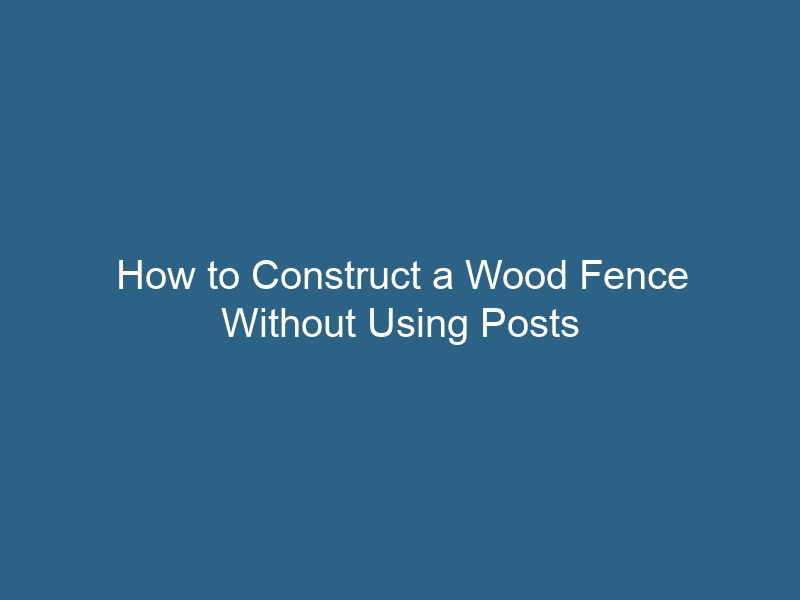Quck answer
To install a wood fence without posts, follow these steps:
1. Determine the layout: Decide where you want the fence to be installed and mark the boundaries.
2. Dig holes for the support posts: Use a post hole digger to create holes along the fence line. The holes should be deep enough to hold the support posts securely.
3. Insert metal T-posts: Place metal T-posts into the holes, ensuring they are evenly spaced and aligned with the fence line.
4. Secure the T-posts: Use a sledgehammer or a post driver to pound the T-posts into the ground until they are stable.
5. Attach the fence panels: Nail or screw the wood fence panels to the T-posts, starting from one end and working your way to the other.
6. Add finishing touches: Trim any excess wood, apply a protective sealant, and add any desired decorations or features to complete the fence installation.
By following these steps, you can install a wood fence without traditional posts.
When envisioning a fence, the typical image is one that is built using posts that are buried in the ground. However, it is possible to construct fences using various materials that rest on the ground instead of relying on buried posts. These fences can be simple and cost-effective to build, while still achieving the same effect as a traditional fence with buried posts.

Image Credit:
SasinParaksa/iStock/GettyImages
Zigzag Fences
A zigzag fence requires more wood compared to a traditional split-rail fence, but it is easier to create without the need for tools and provides a charming appearance to your property. Chestnut, oak, cedar, or juniper rails can be used for a fence that can last up to 100 years. You can either split the rails yourself or purchase pre-cut wood.
Begin by creating a fence bed that is at least 5 feet wide. This will help stabilize your fence against the wind. If desired, use small spikes and yarn to mark the pattern that your fence will follow on the ground before starting construction.
Place a rock or brick at the intersection of each fence angle to keep your fence off the ground. Then, lay down every other rail so that they are parallel to one another, connecting between the stones. This will result in rows of rails that resemble angled parking spaces.
Next, go back in the opposite direction and lay down rails that are parallel to one another, but in the opposite direction compared to the first row. This time, the rails will rest on top of the first row. You can use twine or large bolts to secure the two rows of rails together at their points of intersection. Continue this process until your fence reaches the desired height. If desired, you can lean rails at an angle against the fence for additional support. Remember to remove the spikes and yarn if they were used as markers for the fence area.
Rail Fences
For a different look, you can consider a rail fence with stacked stone columns. If you already have a wooden rail fence, you can purchase prefabricated stone post covers that fit around the fence posts.
To construct this type of fence, start with a sturdy stone or brick base for each column. Since the posts will not be buried in the ground, the base of each stone pillar must be large enough to support the weight of the rails and sturdy enough to withstand wind movement.
Place the rails on top of the base and surround the ends with additional brick and stone to secure them. Using concrete or mortar as a filler is recommended. Repeat this process at equal intervals until your fence reaches the desired height.
Pallet Fence
It is possible to build a fence using pallets. Standard pallets measure 40 inches by 48 inches, so if you are able to gather a sufficient number of them, you can construct a fence without disassembling them.
To build a pallet fence, simply align the pallets and secure the ends with large roofing nails or bolts that are approximately three inches long. This type of fence works best on even ground. Using diagonal support pieces can be beneficial to prevent the entire fence from being knocked over by strong winds.


